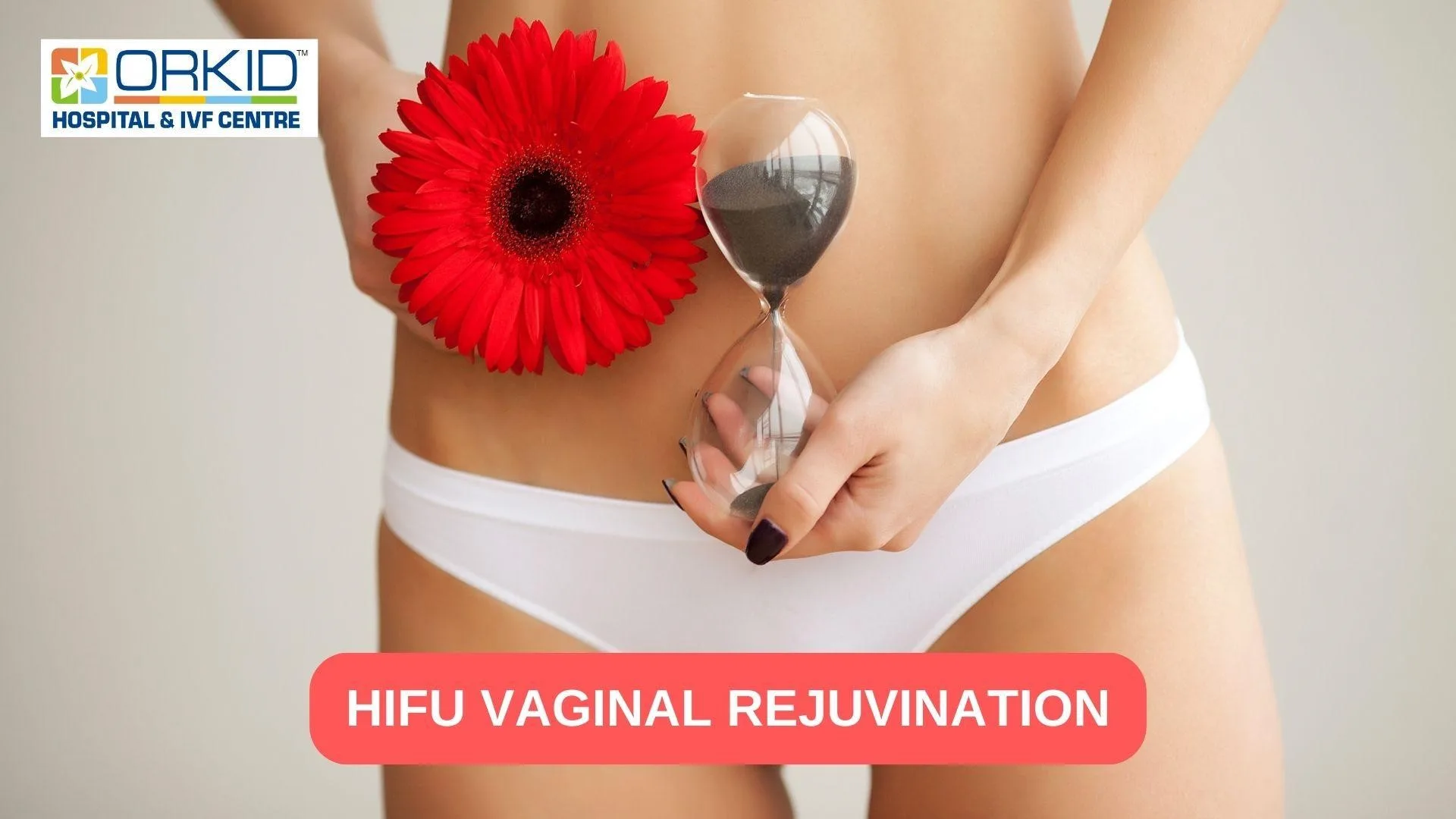As women age or experience childbirth, many notice changes in their vaginal area that can impact both physical comfort and sexual satisfaction. Our expert Dr Kajal Mangukiya of Orkid Hospital, one of the Best Gyno In Surat says, “Fortunately, advanced medical technologies like HIFU offer non-surgical solutions to address these concerns.” High-Intensity Focused Ultrasound (HIFU) vaginal rejuvenation is now available in Surat, providing women with a safe and effective option for vaginal restoration. Let’s explore this cutting-edge solution in detail:
What is HIFU Vaginal Rejuvenation?
HIFU vaginal rejuvenation is a non-invasive procedure that uses focused ultrasound energy to stimulate collagen production and tighten vaginal tissues. This innovative treatment can help improve vaginal laxity, enhance sexual pleasure, and alleviate symptoms of stress urinary incontinence.
The procedure is performed at one of the best IVF centres in Surat, Orkid Hospital, and works by delivering precise ultrasound energy to targeted depths within the vaginal wall. This energy creates small, controlled injuries that trigger the body’s natural healing response, promoting the production of new collagen and elastin fibres. As a result, the vaginal tissues become firmer, more elastic, and better hydrated.
Benefits of HIFU Vaginal Rejuvenation
1. Non-surgical and minimally invasive
2. No downtime required
3. Clinically proven results
4. Improved vaginal tightness and sensation
5. Enhanced sexual satisfaction
6. Reduced symptoms of stress urinary incontinence
7. Increased confidence and quality of life
The HIFU Vaginal Rejuvenation Procedure in Surat
Women in Surat can now access this revolutionary treatment at Orkid Hospital, one of the best IVF hospitals in Surat. The procedure is performed by some of the best gynaecologists in Surat or cosmetic surgeons who specialize in women’s health and aesthetic treatments.
During the treatment:
1. The patient lies comfortably on an examination table.
2. A small, wand-like device is inserted into the vagina.
3. The device emits focused ultrasound energy to predetermined depths within the vaginal wall.
4. The procedure usually takes about 30–45 minutes.
5. Patients may experience a warming sensation but generally report minimal discomfort.
Most women can return to their normal activities immediately after the treatment, though it’s recommended to avoid sexual intercourse for a few days to allow for optimal healing.
Why Choose HIFU Vaginal Rejuvenation in Surat?
Surat’s healthcare sector has seen significant growth and modernization in recent years, with many clinics and hospitals investing in state-of-the-art technologies like HIFU.
By choosing to undergo HIFU vaginal rejuvenation at the best test tube baby centres in Surat, like Orkid Hospital, women can benefit from:
1. Access to cutting-edge medical technology
2. Treatment by experienced and qualified healthcare professionals
3. Competitive pricing compared to larger metropolitan areas
4. The convenience of receiving treatment close to home
5. The opportunity to combine treatment with a visit to Surat’s many attractions
Selecting a Provider for HIFU Vaginal Rejuvenation in Surat
When considering HIFU vaginal rejuvenation, it’s crucial to choose a reputable provider. Look for clinics or medical centres that:
1. Have the best gynaecologists in Surat and are certified and experienced practitioners
2. Use FDA-approved HIFU devices
3. Provide comprehensive consultations and follow-up care
4. Have positive patient reviews and testimonials
5. Maintain high standards of hygiene and safety
What to Expect: Results and Recovery
Dr. Kajal Mangukiya, one of the best gynos in Surat says that while some women may notice immediate improvements after HIFU vaginal rejuvenation, optimal results typically develop over 2–3 months as new collagen forms. Many patients report:
1. Increased vaginal tightness
2. Improved lubrication
3. Enhanced sensation during intercourse
4. Reduced urinary incontinence symptoms
5. Boosted self-confidence
The effects of HIFU vaginal rejuvenation can last for 12–18 months or longer, depending on individual factors. Many women choose to have annual maintenance treatments to sustain the benefits.
Is HIFU Vaginal Rejuvenation Right for You?
HIFU vaginal rejuvenation can be an excellent option for women who:
1. Have experienced vaginal laxity due to childbirth or aging
2. Suffer from mild to moderate stress urinary incontinence
3. Desire improved sexual satisfaction
4. Seek a non-surgical alternative to traditional vaginal rejuvenation procedures
5. Are in good overall health and have realistic expectations
Conclusion
HIFU vaginal rejuvenation represents a significant advancement in women’s health and wellness, offering a non-invasive solution to common concerns related to vaginal laxity and function. With this innovative treatment now available in Surat, women in the region have access to a safe, effective, and convenient option for vaginal restoration.
As with any medical procedure, it’s crucial to thoroughly research and consult with qualified professionals before deciding to undergo HIFU vaginal rejuvenation. By choosing a reputable provider in Surat, you can take a positive step towards improved vaginal health, enhanced sexual satisfaction, and greater overall well-being.



